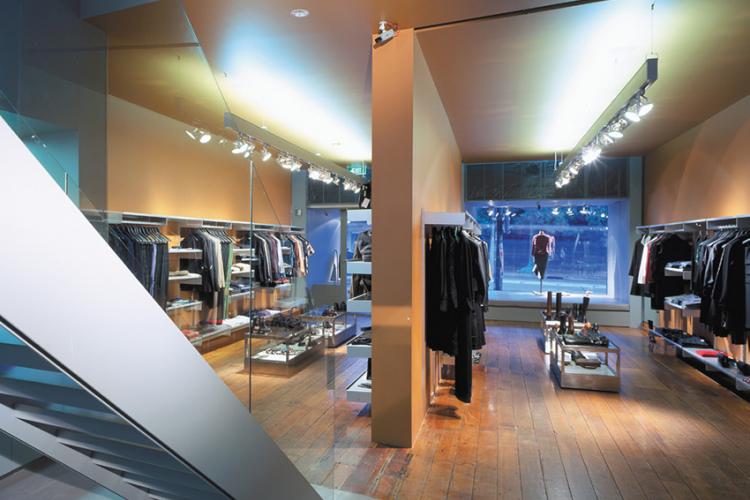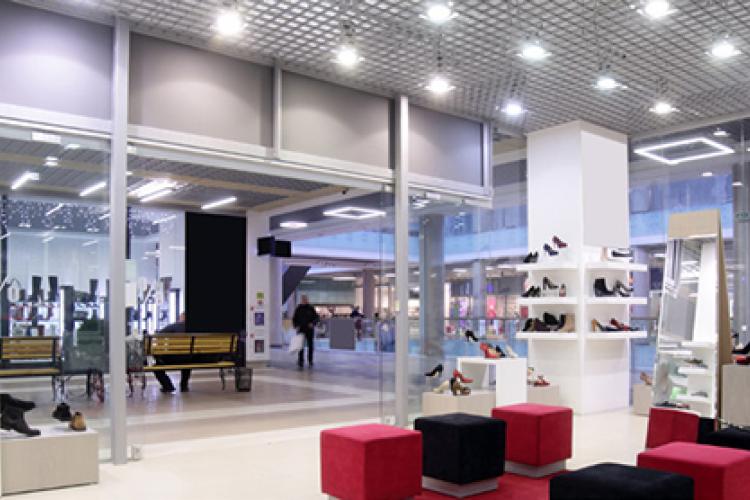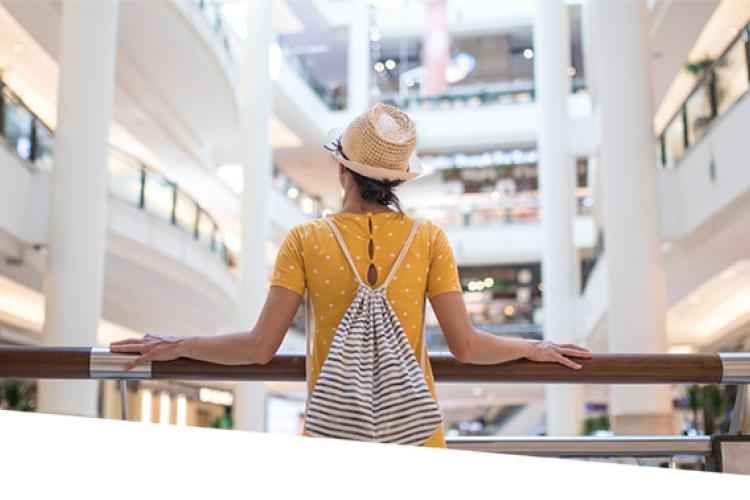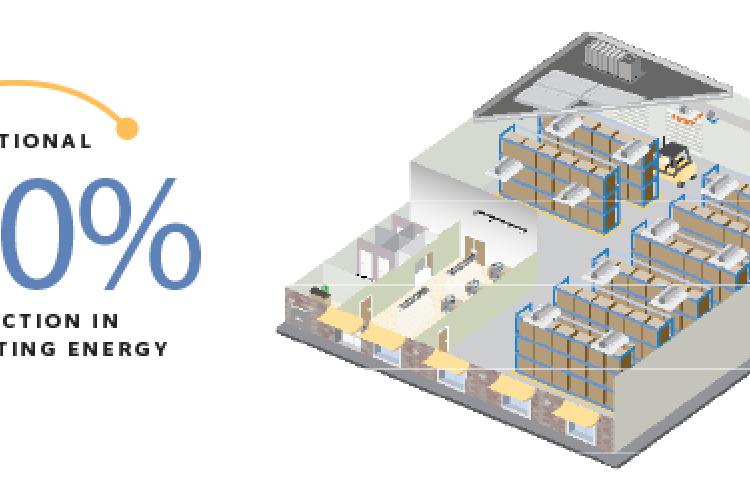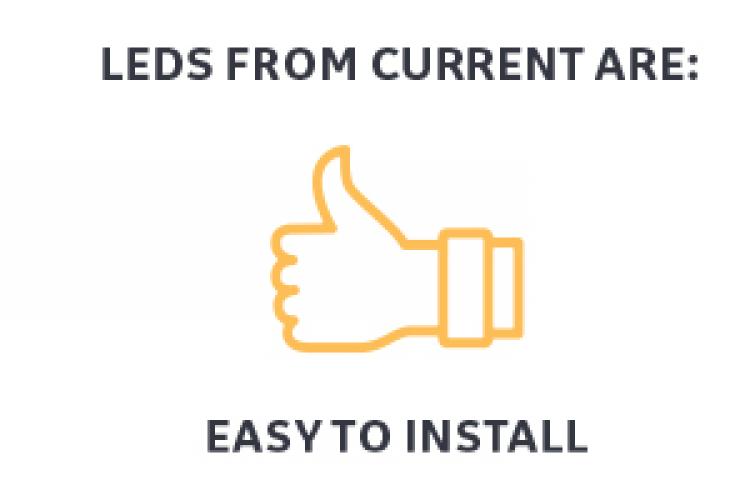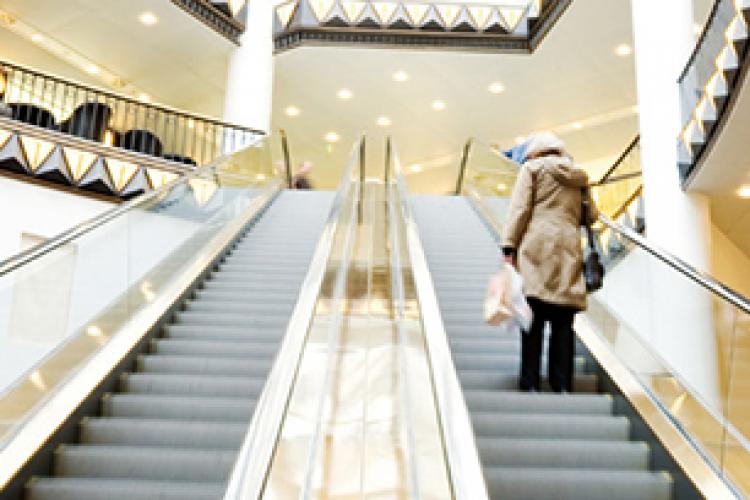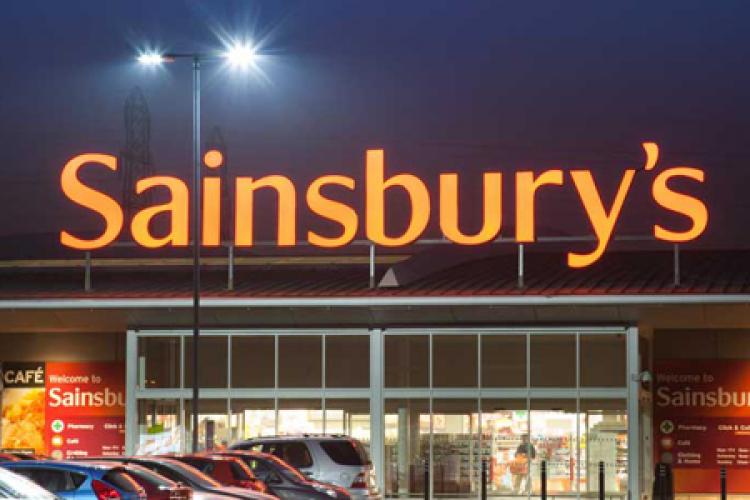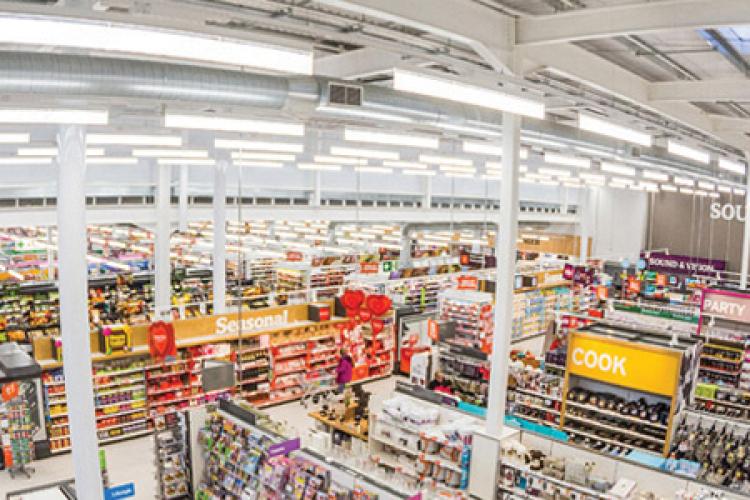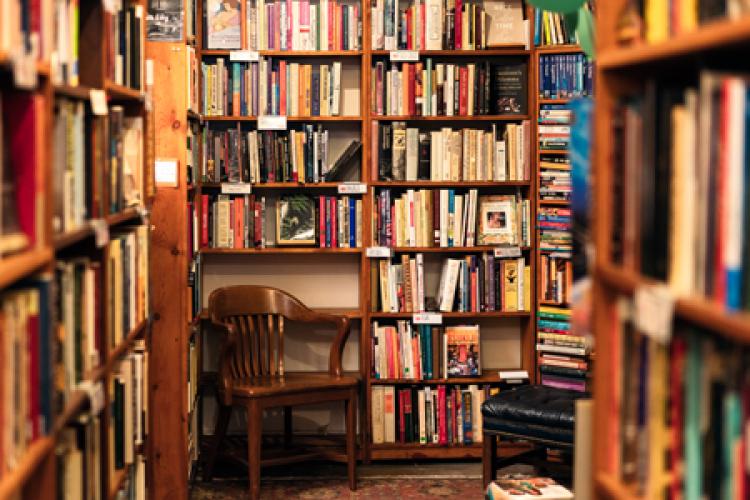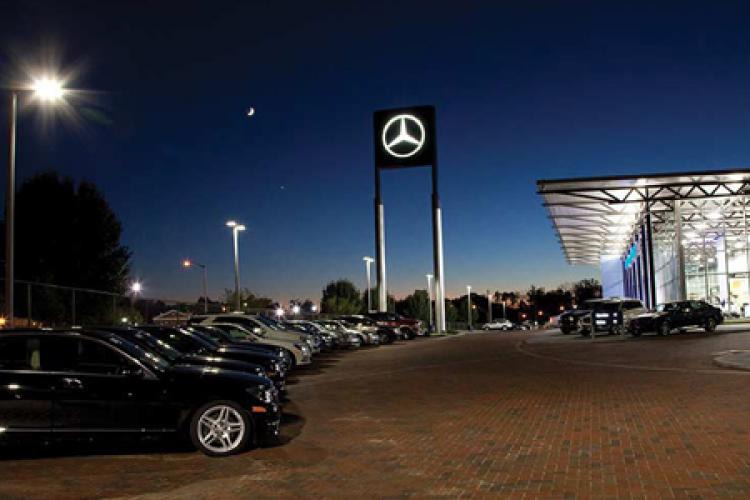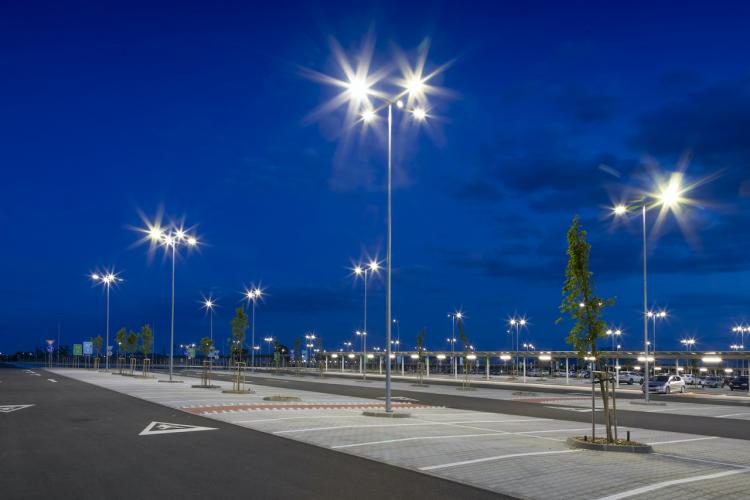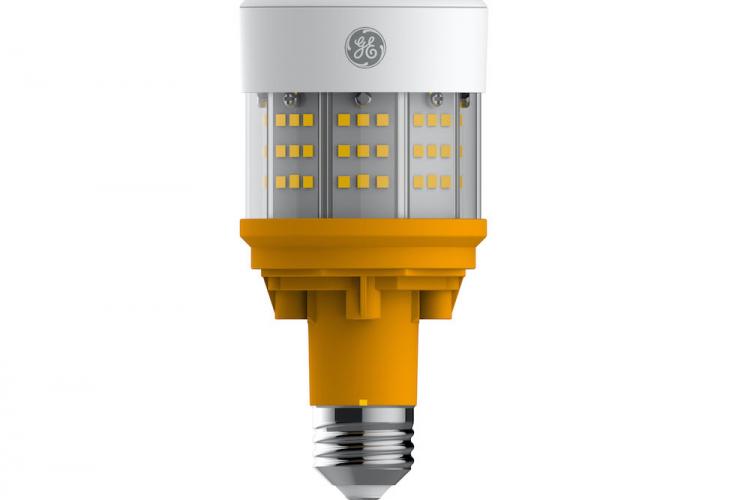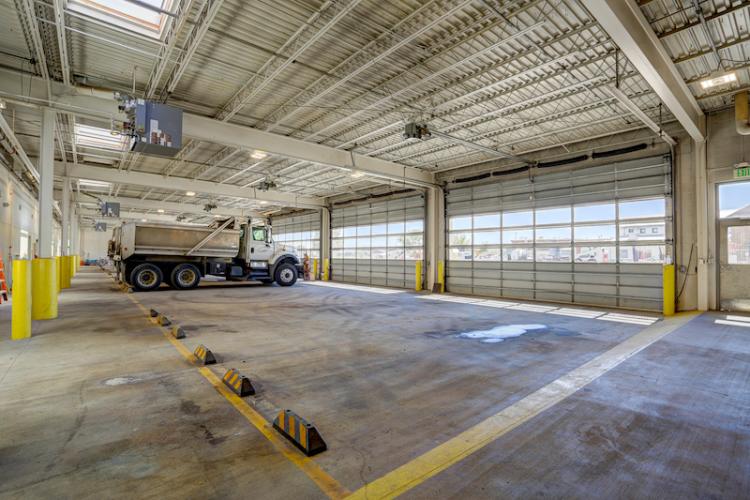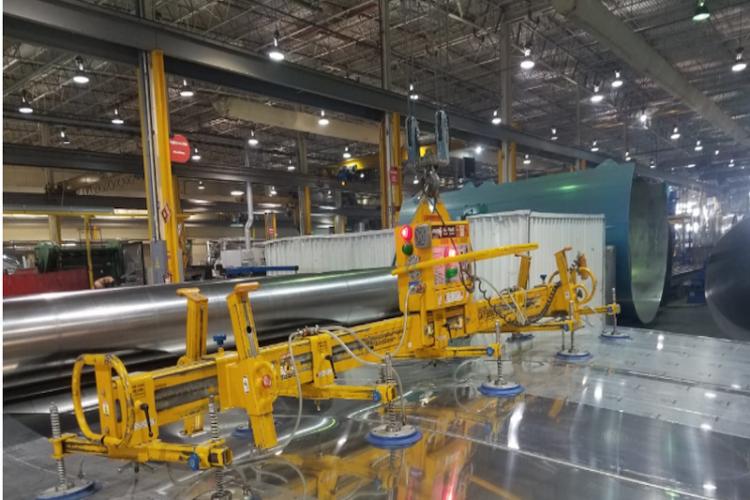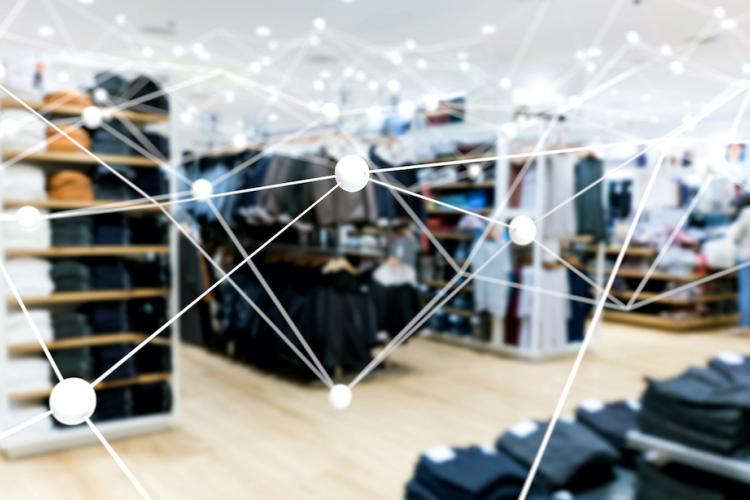Whitepaper: LED 101 for Retail Properties
Whitepaper: LED 101 for Retail Properties
LED lighting can bring a broad range of benefits to many types of environments. This reference guide discusses the basics of LED and lighting controls technology and how it can be applied to your retail space.
Untapped Potential
LED solutions are making steady inroads in replacing traditional light sources, yet most of their energy- and money-saving potential remains untapped, according to the latest update of the U.S. Department of Energy’s (DOE) report, Adoption of Light-Emitting Diodes in Common Lighting Applications.
The report estimates that LED products translated to $4.7 billion in energy savings in 2016. However, savings could have been nearly 10 times greater ($44 billion) if all applications had been completely switched to top-tier LED technologies. Every day, retail store owners worldwide discover the incredible advantages of LEDs for the first time. Beyond immediate energy savings, superior light quality and easy controllability, LEDs can make the property outside and merchandise inside more appealing to make a big impact on your bottom line.
Future-Proof Infrastructure
By leveraging smart LED lighting fixtures to create digital ceilings, retailers are setting the stage for intelligent environments and transformative shopping experiences. Not only can stores gain greater visibility into how their sites are consuming energy, but today’s Internet of Things (IoT) technologies are also redefining how consumers engage with brands at the point of purchase.
A connected lighting system that utilizes advanced sensors and controls can communicate with networked devices throughout a store to enable exciting outcomes, from helpful wayfinding to high-accuracy indoor positioning, to heat-mapping analytics that help drive conversions. As automated checkout, personalized discounts and smart shelves become the norm, smart lighting can support a wide inventory of IoT use cases and countless applications yet to come.
Big Savings by 2025
McKinsey Global Institute set out to look beyond the hype to understand exactly how IoT technologies can create economic value. Its central finding is that the hype may in fact understate the full potential of the IoT. For retailers, the IoT could have an economic impact of $410 billion to $1.2 trillion per year by 2025. The biggest opportunities include:
- Reducing checkout queue times by 40% to 80% to provide a potential economic benefit of $30 billion to $135 billion a year.
- Real-time personalized promotions that can lead to a $89 billion to $348 billion benefit.
- Store layout optimization, creating a $79 billion to $158 billion benefit.
- Reducing losses by 1% of the cost of goods sold (on average, shrinkage costs stores 1.3% of revenue, or $182 billion globally), enabling a $23 billion to $92 billion benefit.
- Condition-based maintenance of physical assets, saving $16 billion to $45 billion.
- Smarter customer relationship management, meaning $12 billion to $52 billion in additional revenue.
- Reducing inventory carrying costs up to 10%, saving $5 billion to $15 billion.
- Optimized staff allocation, resulting in a 10% cost reduction worth $10 billion to $19 billion.
- Improving process flows using IoT data, delivering $1.5 billion to $4 billion of economic benefits.
THE BASICS
An LED, or light-emitting diode, is a semiconductor that emits visible light when energized. This requires a driver, or power supply, that creates electrical pressure (voltage), pushing charge carriers through the LED.
LEDs are also referred to as solid-state lighting (SSL) devices. Unlike conventional incandescent and fluorescent lamps, LEDs do not use electrical filaments, plasmas or gases to create light.
COMPONENTS AND CONSTRUCTION
Today’s general-use LED lamps and luminaires tend to incorporate the following components:
 CHIP AND MODULE
CHIP AND MODULE
Made up of multiple thin layers of semiconductor material that produce light when electrons move between the layers (known as electroluminescence); for manufacturers, achieving the desired light output, color temperature and product life span requires precise engineering to ensure just the right amount of electricity is delivered to the chip. Multiple chips are housed within a module.
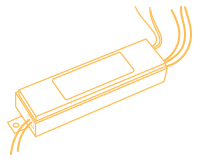 DRIVER
DRIVER
Regulates power to the module and protects chips from current fluctuations (much like ballasts for fluorescent lamps).
 HOUSING
HOUSING
Durable outer shell that protects and positions the light source; sound mechanical engineering prevents corrosion and humidity from degrading electrical components.
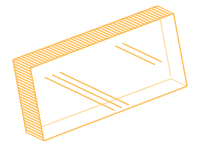 LENS
LENS
Directs light where it is needed (typically allows more control than a reflector) to minimize wasted light and needless energy consumption; different designs are used to create different effects and light distribution patterns.

Retailers Use More Light
Different activities demand different amounts of light within a building, and different types of buildings demand more light than others. Consider the average amount of lit floorspace for all buildings is 79%, but only three building types have light in at least 90% of the floorspace―food sales (93%), health care (91%) and education (90%). Mercantile buildings, meanwhile, rank fourth with at least 87% of lit floorspace. Clearly, store owners have much to consider when it comes to improving operational efficiency.
> U.S. Energy Information Administration (EIA)
Watts a Lumen?
 Most people still refer to the “brightness” of a lamp or luminaire by its wattage. In fact, watts are not a measure of light output but power (specifically, the rate at which the energy is emitted). Lumens, on the other hand, provide an accurate measure of the extent to which a light source will illuminate a space or object. One lumen equals the amount of light falling on a square foot of surface illuminated to 1 foot-candle (that is, the illumination produced by one candle at the distance of 1 foot).
Most people still refer to the “brightness” of a lamp or luminaire by its wattage. In fact, watts are not a measure of light output but power (specifically, the rate at which the energy is emitted). Lumens, on the other hand, provide an accurate measure of the extent to which a light source will illuminate a space or object. One lumen equals the amount of light falling on a square foot of surface illuminated to 1 foot-candle (that is, the illumination produced by one candle at the distance of 1 foot).
For comparison, the light output of a 100-watt incandescent bulb is equivalent to an LED lamp with around 1,500 lumens. A 60-watt bulb, meanwhile, is equivalent to about 840 lumens.
Consider These Savings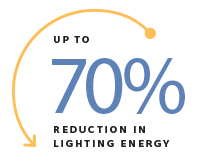
According to the EIA’s latest Commercial Buildings Energy Consumption Survey (CBECS), 17% of all electricity consumed in U.S. commercial buildings is for lighting, making it the largest end use of electricity besides the Other category.
It is no surprise the DOE forecasts LED will represent 86% of all lighting sales by 2035 as building operators strive for optimal efficiency. For many retailers, this strategy will include the use of advanced controls that can increase energy savings dramatically, according to the DOE.
GE Current, a Daintree company has documented lighting energy savings up to 50% at retail sites that have switched to LED and up to 20% additional savings where controls are used, proving that with the right combination of products and solutions, store owners can reduce their annual spend by as much as 70%.
Instant Energy Reductions
A typical store spends about $0.71 per square foot per year in energy costs. Retailers looking to reduce their overhead will find LEDs can be up to 10 times more efficient than halogen lighting and up to 1.4 times more efficient than high-intensity discharge (HID) and fluorescent fixtures, equating to big savings.
LED Solutions for Stores
No matter your lighting need, there’s an LED option in stock. Common lighting types for retail sites include:
![]() Low Bay Lighting solutions designed for all sorts of open ceiling arrangements that also make it easy to create long, continuous rows of LED light.
Low Bay Lighting solutions designed for all sorts of open ceiling arrangements that also make it easy to create long, continuous rows of LED light.
![]() Area Lighting for brightly illuminating parking lots, pathways and storefronts while saving significantly more energy than standard HID systems.
Area Lighting for brightly illuminating parking lots, pathways and storefronts while saving significantly more energy than standard HID systems.
![]() Track and Down Lighting delivering high lumens and light beam intensity to big box, grocery and other high-ceiling applications.
Track and Down Lighting delivering high lumens and light beam intensity to big box, grocery and other high-ceiling applications.
![]() Recessed Indoor Lighting that can replace outdated fluorescent lamps in drop ceilings.
Recessed Indoor Lighting that can replace outdated fluorescent lamps in drop ceilings.
![]() Exterior Signage Lighting that brings the energy efficiency of LEDs to your exterior branding assets.
Exterior Signage Lighting that brings the energy efficiency of LEDs to your exterior branding assets.
Stop the Service Calls
For most retailers, the major cost of lighting is relamping. Maintenance can be a weekly or daily chore depending on the store, requiring a large assortment of replacement lamps to be kept on-site along with ladders and lifts. Frequent changeouts are how a $50 lamp can become a $400 lamp, especially when electricians are involved. LEDs tend to have a higher purchase price but can cost less to own than conventional lighting products.
Recommended Lighting Practices
Retailers who want to make merchandise displays more appealing can obtain Recommended Practice for Retail Lighting from the Illuminating Engineering Society (IES). The 112-page guide provides in-depth discussion of essential lighting criteria and metrics for retail environments and can serve as a foundation for improving lighting design across your stores.

LED Advantages
LEDs are widely considered the biggest breakthrough in lighting technology since the incandescent bulb, with the boundaries of efficacy and life having been greatly extended thanks to constant innovation.
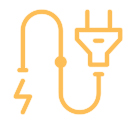 SUPERIOR ENERGY EFFICIENCY
SUPERIOR ENERGY EFFICIENCY
Typically, LEDs consume about 50% less electricity than traditional light sources, making substantial energy savings the most attractive feature to many store owners. A standard T8 fluorescent lamp, for instance, uses roughly 250 watts, whereas an equivalent LED solution may use just 130 watts. Multiplied across tens or hundreds of thousands of lighting fixtures, the savings can be quite significant.
 MINIMAL HEAT OUTPUT
MINIMAL HEAT OUTPUT
LEDs produce little heat, most of which is absorbed by a heat sink. Compared to fluorescent, metal halide and high-pressure sodium (HPS) fixtures, LEDs are a much cooler option for retailers who want to keep shoppers feeling comfy at all times. Less heat contribution also means HVAC systems do not have to work as hard throughout the day.
 INSTANT-ON ABILITY
INSTANT-ON ABILITY
Many fluorescent and HID lamps do not provide immediate full brightness, often requiring about three minutes to reach maximum light output. LED systems, by contrast, emit 100% brightness instantly, with no restrike delay.
 IMPROVED LIGHT LEVELS
IMPROVED LIGHT LEVELS
LED fixtures can aim light hemispherically (that is, in specific directions) unlike standard lamps and luminaires that emit light spherically in all directions. In retail environments this provides the flexibility to point light precisely where it is needed, whether to make a display dazzling or to brightly illuminate shelves top to bottom. Many LED products offer different photometric options―or light distribution patterns―to meet different requirements.
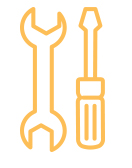 LONGER LIFE, LESS MAINTENANCE
LONGER LIFE, LESS MAINTENANCE
Unlike conventional lamps, LEDs don’t “burn out” —instead they slowly dim or deteriorate over a long period of time. For example, an LED luminaire rated for L70 at 100,000 hours will depreciate to 70% of its initial lumen output after 100,000 hours of operation. As opposed to ordinary lamps, longer-life LEDs can greatly reduce maintenance needs, minimize relamping costs and keep stores looking their best, where there are no dark spots in the ceiling due to expired lamps.
Make All Merchandise More Attractive
LEDs can offer optimized energy efficiency and color quality. In the past, improving color meant sacrificing efficiency, but no longer. Current’s reveal® TriGain™ technology is a narrow-band red phosphor that increases both the color rendering index (CRI) and R9 (a saturated red critical to color accuracy) without reducing lighting system efficacy. The result is vivid hues that bring fresh appeal to fabrics, produce and more. Unlock the power of red and see how ultimate color quality is changing the retail lighting landscape from supermarkets to department stores.
Lighting Controls
While lighting controls can save money by helping to keep energy use to a minimum, few retailers utilize controls or take full advantage of the system that is in place.
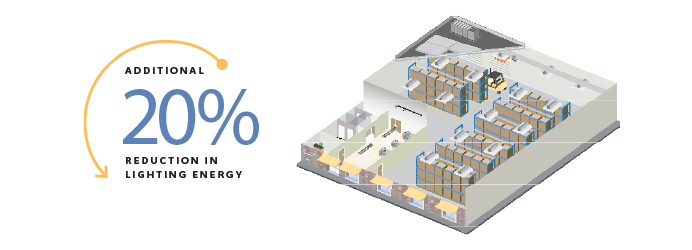
The good news is that a new generation of controls is making it much simpler to manage the lighting needs of retail buildings. Today’s sophisticated yet easy-to-use systems can provide automated control of individual or multiple lighting fixtures in a store or across many sites, enabling completely new energy-saving strategies. In fact, lighting controls can save retail operators up to 20% more energy on top of the savings already created by LEDs.
Depending on your goals, there are three levels of lighting controls to consider:
- Standard controls for simple on/off switching, dimming and occupancy sensing.
- Advanced controls for added capabilities like daylight harvesting (reducing light levels based on daylight conditions) and smart scheduling.
- Connected controls that leverage lighting fixtures with built-in sensors as a communications hub to deliver value that goes beyond energy savings. Working in conjunction with other sensors, switches and controllers, connected lighting systems can form a wireless mesh network throughout the store. By capturing data and exchanging information with shoppers, brands can open the door to entirely new retail experiences.
Connected lighting systems, as a platform for exciting IoT applications, can support everything from store layout optimization to inventory monitoring to maintaining a perfectly inviting environment that puts shoppers at ease. With a bird’s-eye view of all activities on the sales floor, lighting is ubiquitous and unrivaled as a framework for supporting digital transformation initiatives.
Furthermore, control of multiple store locations can be centralized on a single platform, enabling remote management and visibility across your property portfolio. Such platforms can also integrate with existing building management systems (BMS) to extend to other forms of control, unlocking even more powerful energy management strategies.
The bottom line is that the right system can deliver substantial energy savings and exclusive operational benefits. As many retailers are learning, now is the time to have a new conversation about lighting controls.


PARTNERS IN PUSHING BOUNDARIES
Current is part of the Intel® Internet of Things (IoT) Solutions Alliance, which includes 400-plus global member companies committed to accelerating the deployment of intelligent devices and end-to-end analytics. Close collaboration with Intel and each other enables Alliance members to innovate with the latest technologies and help developers deliver first-in-market solutions, including tools for transforming retail environments.
Learn more about open, autonomous system architecture and discover Current’s own network of IoT solutions providers that are connecting data from device to cloud to digital outcomes.
Intel and the Intel logo are trademarks ofIntel Corporation in the U.S. and/or other countries.
Daintree Demonstrates Huge Savings
A lighting demonstration project―a joint initiative between the Design Lights™ Consortium and DOE―saw a 73,000-square-foot Stop & Shop store in Massachusetts outfitted with new LED lighting and advanced controls. A system from Daintree was used to facilitate local wireless control of the LED fixtures, with all luminaires having built-in occupancy and daylight-harvesting sensors.
Results showed that replacement of older fluorescent fixtures with LEDs saved 30% of estimated annual lighting energy use, and that task-tuning, occupancy-sensing and daylight-sensing controls increased savings by 36%―a 66% total reduction in energy consumption. Using Daintree, store managers can also customize light levels with ease.
> Read more about how Stop & Shop is saving with the latest lighting technologies.
IoT for Improving Cold Chain Management
Inefficiency is found everywhere in the freezer aisle. Legacy refrigeration systems, cases and controls consume more energy than most store owners realize, leading to rising utility bills and stock loss when units can’t keep their cool.
All retailers deal with aging, disparate equipment, but only those on the edge are harnessing the power of refrigeration asset performance management to improve food quality and reduce operating costs.
Supermarkets toss out $15 Billion worth of unsold fruits and vegetables each year, according to the USDA.
Daintree + IMS Evolve
A strategic partnership between Current and IMS Evolve combines Daintree lighting control and sensor data aggregation capabilities with IMS Evolve’s ability to drive enterprisewide insights. The result is an integrated IoT solution for cold chain management that can help retailers gain a clear view of energy, supply chain and merchandising systems.
The Daintree + IMS Evolve platform consists of a single Daintree access point at each retail site that enables flexible lighting, HVAC and plug load controls. Additionally, sensors are added to refrigerated cases to optimize temperature by product type.
The result is a unified approach for capturing powerful equipment-, site- and enterprise-level analytics, all on a single dashboard. For retailers, the advantages include:
- Efficient energy consumption
- Increased asset uptime
- Less stock loss
- Fewer customer complaints
- More proactive maintenance
- Greater profits
Daintree + IMS Evolve can accelerate your digital transformation and bring IoT innovation to cold chain management. Don’t let aging equipment and casual oversight spoil your margins—see how the savings can look in your stores when you contact Current.
Edge-to-Cloud Efficiency
One large retailer is leveraging the Daintree + IMS Evolve solution to create incredible savings across more than 1,000 stores:
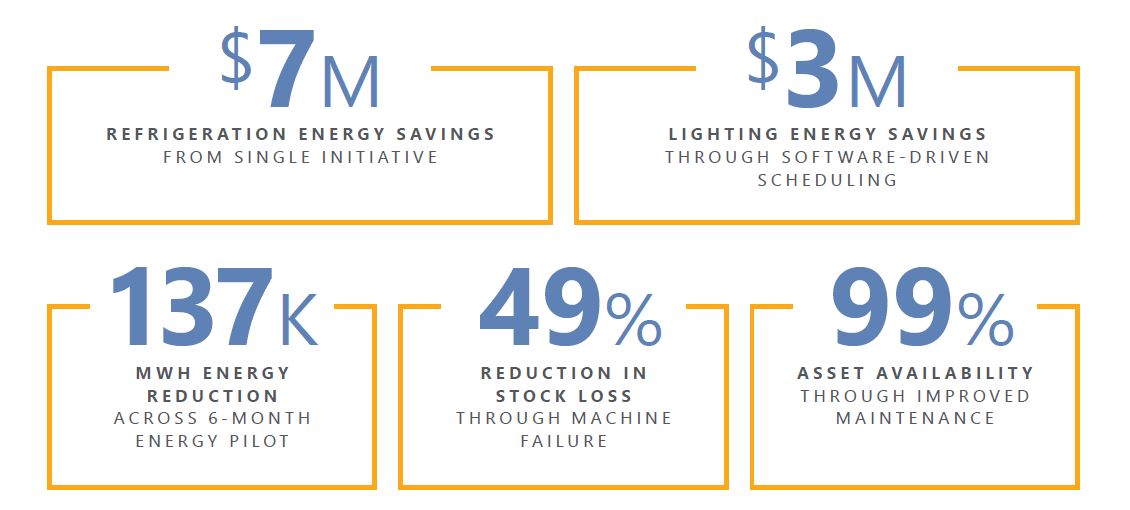
LEDs in Action
From a complete lighting upgrade to completely transforming retail environments, there are many ways stores can benefit from LED and lighting controls technology:
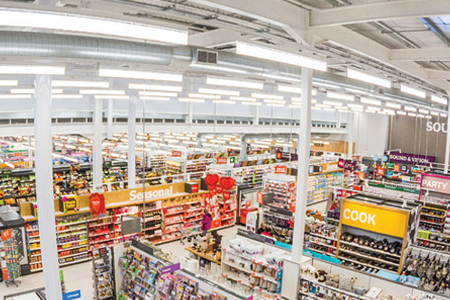 Walmart Installs 1.5 Million LEDs
Walmart Installs 1.5 Million LEDs
Walmart Inc. has now installed more than 1.5 million LED fixtures from Current across 6,000 stores, distribution centers and corporate offices in 10 countries. What started over a decade ago with refrigerated display lighting has grown to include the latest parking lot and interior lighting solutions. Today, Walmart is moving aggressively to complete LED and lighting controls retrofits in 100% of its distribution centers in the U.S., along with plans to replace all other forms of overhead lighting with LED.
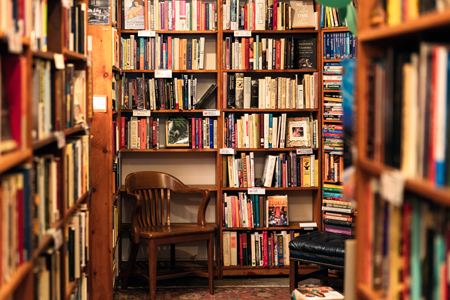 Current Puts LifeWay in Control
Current Puts LifeWay in Control
LifeWay Christian Stores operates over 160 locations nationwide and wanted to roll out large-scale energy efficiency improvements. After trialing several technologies, the retailer selected the Daintree Enterprise controls solution for its flexibility, ease of use and fast payback potential. Now, managers can tailor lighting profiles to the needs of individual stores, which helped LifeWay slash energy use by 34% in the first year.
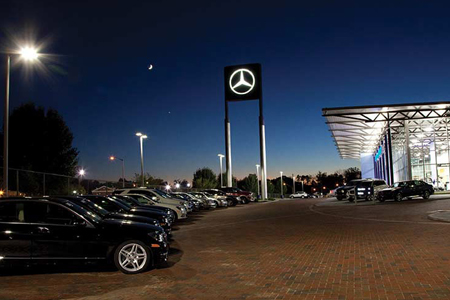 Dealership Sazzles with New Lighting
Dealership Sazzles with New Lighting
Garage Isla Verde, LLC, is a Mercedes-Benz dealer distinguished by the quality of its employees and ultramodern facilities. When a new showroom had to be elegant but energy-efficient, this luxury vehicle seller chose Albeo® LED high-bay fixtures and Lumination® LED luminaires from Current to give the space functional appeal. Along with bright outdoor LED lighting and a lighting controls system to tie it all together, the dealership is now driving new business.
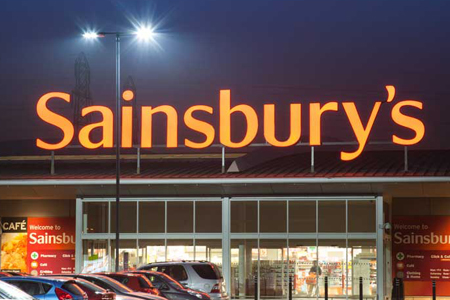 Sainsbury’s Upgrades All Supermarkets to LED
Sainsbury’s Upgrades All Supermarkets to LED
Sainsbury’s prides itself on creating greener supermarkets throughout the U.K. and recently worked with Current to bring LED lighting to all locations. The massive retrofit project is part of an initiative to reduce carbon emissions and includes more than 250,000 LED fixtures installed across 450 sites by 2020. As a result, Sainsbury’s stands to reduce lighting energy use by 58% and emissions by 3% annually.
AVERAGE PAYBACK PERIOD
While every facility is different, the typical store, office, warehouse or storage center outfitted with conventional lighting can expect a full return on investment from a complete LED retrofit within one to three years on average, based on the energy savings created.

SMART RETAILING: A Higher Standard of Shopping
Now is the time to outfit your store with technologies that can improve operations today and pave the way for tomorrow’s innovations. A connected lighting system provides the infrastructure to support IoT strategies from the parking lot to the loading dock, bringing data intelligence to every corner of your building. By embracing digital transformation, retailers can elevate in-store experiences to new levels of comfort and convenience.
A digital ceiling, for instance, can continually adjust heating and cooling on the sales floor by collecting temperature and humidity readouts, using the data to optimize retail environments around-the-clock. Or when no movement is detected in different parts of the store, lights can automatically dim to conserve energy.
Occupancy and heat mapping data enabled by intelligent light fixtures can also determine which aisles are the most trafficked, or when extra staffing is needed in checkout ahead of the long lines. Smart light fixtures that can identify repeat customers by their smartphone can further provide incredible insights on shopping decisions, dwell time and the path to purchase.
Ultimately, information captured by connected infrastructure can help retailers anticipate buying behaviors and move more inventory through special offers and highly targeted incentives. At the same time, data collection can support efforts to analyze merchandise mix and determine which strategies are making the biggest impact at the register.
A smart lighting network might also integrate with mobile devices to alert store associates when a shopper requires assistance, and intelligent LEDs have the potential to take supply and demand to the next level by monitoring inventory in real time and sending requests to a local fulfillment center.
For retailers ready to embrace digital transformation, the Internet of Things promises something for everyone. Current’s own IoT solutions are “open-on-the-top” and “open-on-the-bottom,” meaning a variety of sensors can be integrated on the bottom to create APIs for countless software solutions on the top. Combining LED lighting, sensors and controls can turn ordinary ceilings into digital ceilings that redefine retail spaces.
When Edison invented electric light, his challenge didn’t end there—he next had to figure out how to scale and optimize his creation. Well over a century later, Current is revisiting this challenge with LEDs. Tapping into the full power of LED technology while embracing IoT opportunities allows Current to explore how the retail sector cannot only adapt to but thrive in this changing world.
By assessing your facility’s lighting, you can determine if an LED solution is right for you―and that starts with a lighting audit conducted by a trusted partner.
Want to learn more?
Contact GE Current, a Daintree company, to explore the best options for your retail building.


